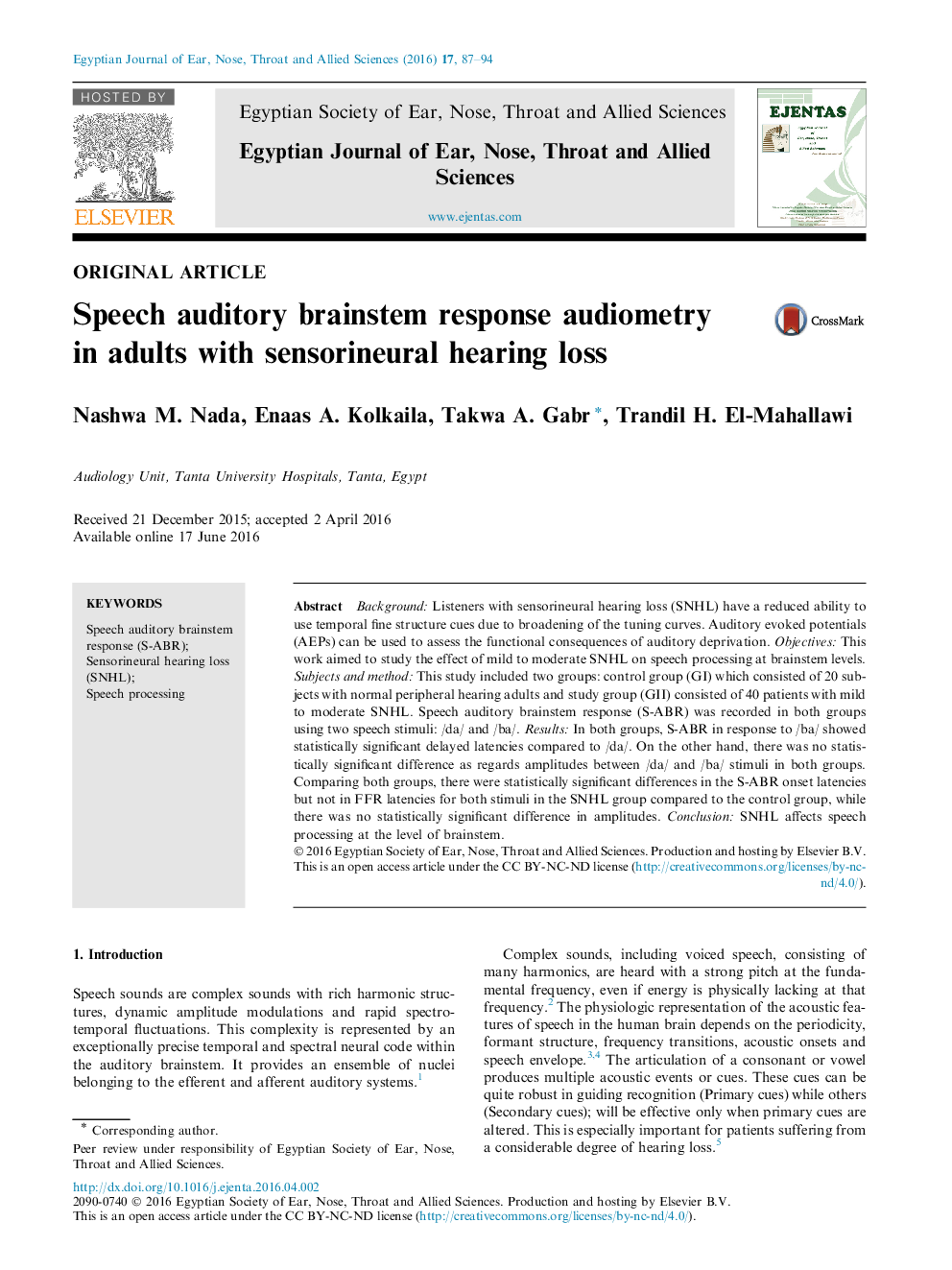| Article ID | Journal | Published Year | Pages | File Type |
|---|---|---|---|---|
| 4108807 | Egyptian Journal of Ear, Nose, Throat and Allied Sciences | 2016 | 8 Pages |
Background: Listeners with sensorineural hearing loss (SNHL) have a reduced ability to use temporal fine structure cues due to broadening of the tuning curves. Auditory evoked potentials (AEPs) can be used to assess the functional consequences of auditory deprivation. Objectives: This work aimed to study the effect of mild to moderate SNHL on speech processing at brainstem levels. Subjects and method: This study included two groups: control group (GI) which consisted of 20 subjects with normal peripheral hearing adults and study group (GII) consisted of 40 patients with mild to moderate SNHL. Speech auditory brainstem response (S-ABR) was recorded in both groups using two speech stimuli: /da/ and /ba/. Results: In both groups, S-ABR in response to /ba/ showed statistically significant delayed latencies compared to /da/. On the other hand, there was no statistically significant difference as regards amplitudes between /da/ and /ba/ stimuli in both groups. Comparing both groups, there were statistically significant differences in the S-ABR onset latencies but not in FFR latencies for both stimuli in the SNHL group compared to the control group, while there was no statistically significant difference in amplitudes. Conclusion: SNHL affects speech processing at the level of brainstem.
